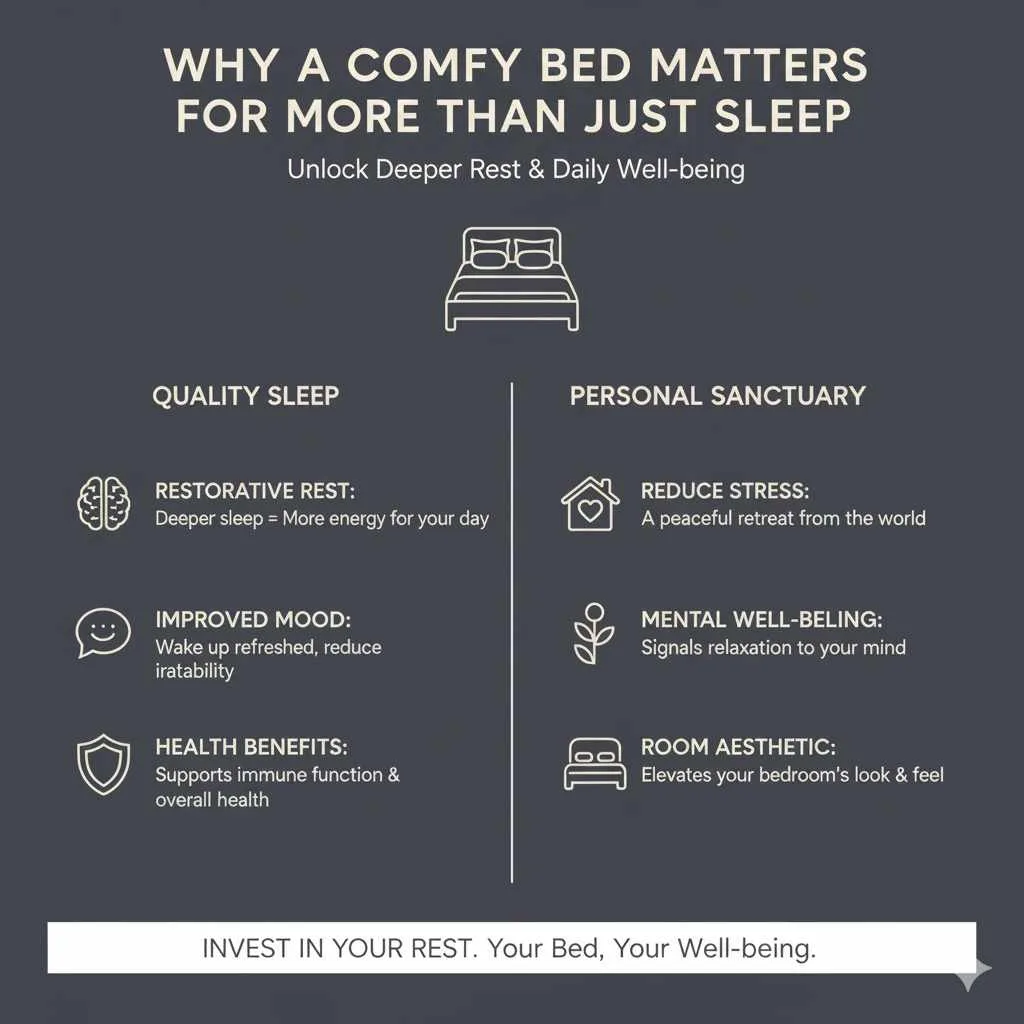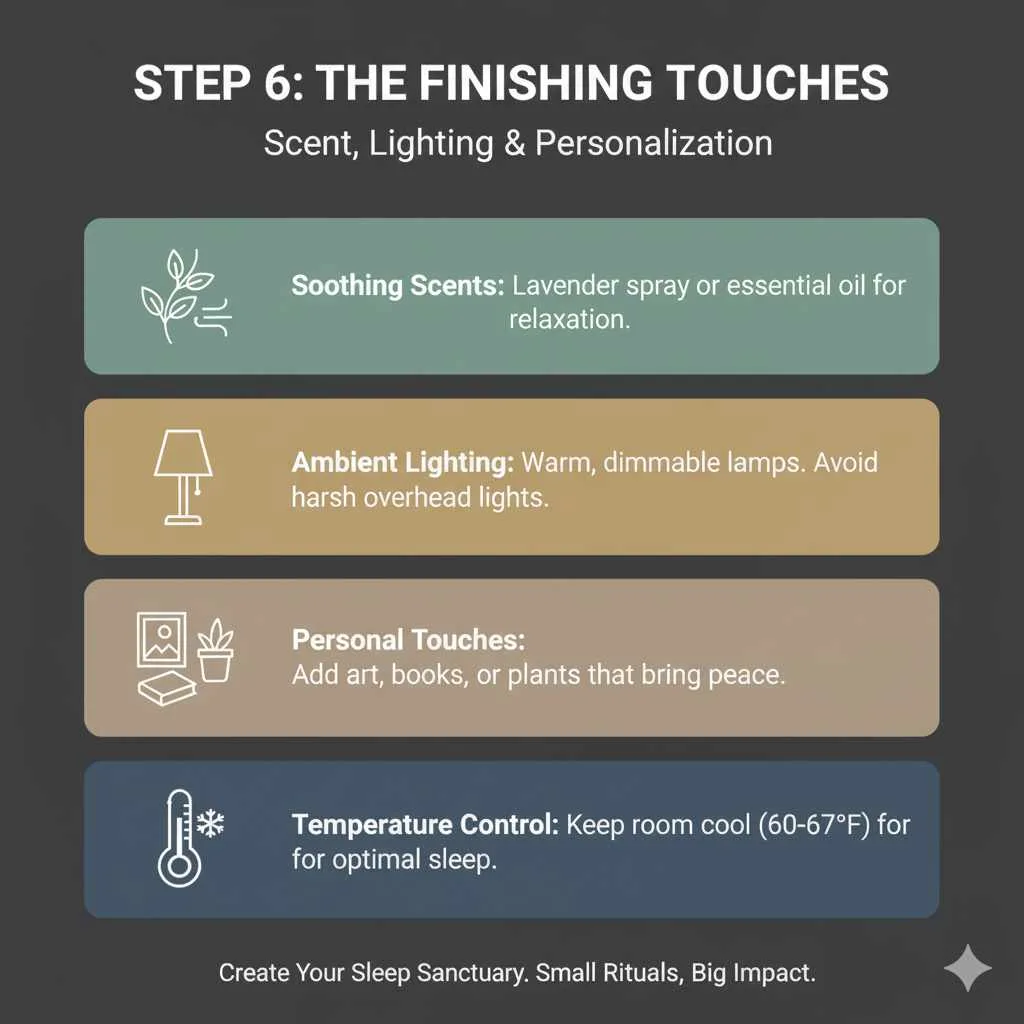Make your bed an unbelievably cozy sanctuary with simple hacks! Discover easy ways to boost comfort, from choosing the right bedding to adding charming touches that transform sleep into a luxurious experience.
Ever crawl into bed after a long day, only to find it’s… just okay? You deserve more than just “okay” sleep! Creating a truly comfy bed isn’t about expensive furniture; it’s about smart choices and a few simple tricks. Many of us struggle to get that truly restful sleep because our bedrooms feel more like a place to just crash than a peaceful haven. But don’t worry! You can absolutely transform your bed into the coziest spot in your home. I’m here to guide you through some genius sleep hacks that are easy to implement and will make a world of difference. Get ready to design your dreamiest sleep space, step by step!
From selecting the perfect linens to layering textures, we’ll cover everything you need to know to make your bed the ultimate comfort zone. Let’s dive in and learn how to make a bed comfy!
Why a Comfy Bed Matters for More Than Just Sleep
It might seem simple, but a comfortable bed is crucial for well-being. It’s not just about falling asleep faster; it’s about the quality of that sleep. When your bed feels inviting and supportive, it signals to your brain that it’s time to relax and recharge. This can lead to deeper, more restorative sleep, which has a ripple effect on your energy levels, mood, and overall health throughout the day. Think of your bed as your personal retreat, a place where the stresses of the world melt away. A well-designed, comfortable bed can even enhance the aesthetic of your entire bedroom, making it a more welcoming and peaceful space.
A cozy bed is an invitation to rest. It’s a space dedicated to comfort, rejuvenation, and peace. When your sleeping environment is inviting, it can significantly reduce pre-sleep anxiety and make winding down much easier. Plus, a beautifully made bed just feels good! It’s often the focal point of a bedroom, so investing a little time and thought into its comfort and appearance pays off in countless ways. Let’s explore how to achieve that perfect cozy feeling.

Step 1: The Foundation – Choosing the Right Mattress and Topper
The starting point for any comfortable bed is the mattress itself. Is yours still supportive? If it’s lumpy or past its prime, even the plushest blankets won’t make it feel truly great. For a quick refresh, consider a mattress topper. They can add an extra layer of softness or firmness, depending on your preference.
Signs You Might Need a New Mattress or Topper
- You wake up with aches and pains.
- Your mattress has visible sags or dips.
- Your mattress is over 7-10 years old (lifespan varies by type).
- You disturb your partner frequently when you move.
A good mattress topper can be a budget-friendly way to enhance comfort without buying a whole new mattress. Materials like memory foam, gel-infused foam, or plush fiberfill can make a significant difference. For example, a memory foam topper can contour to your body, relieving pressure points, while a fiberfill topper offers a softer, more cloud-like feel. Researching different types can help you find the perfect fit for your comfort needs. For more detailed information on mattress types and their benefits, you can explore resources like the Sleep Foundation, a comprehensive site dedicated to sleep health and mattress reviews.
Step 2: The Dreamy Layers – Duvets, Comforters, and Quilts
Once your foundation is set, it’s time to think about the main event: your bedding! The type of duvet, comforter, or quilt you choose plays a starring role in how comfy your bed feels. The key is to layer textures and weights to create a cozy haven.
Choosing Your Ideal Bedding Outer Layer
- Duvets: These are insert-and-cover systems. You can easily change the cover for a new look or wash it separately. The insert provides the warmth and loft.
- Comforters: These are usually all-in-one pieces with the filling stitched inside. They’re easy to use right out of the package.
- Quilts: Lighter than duvets and comforters, quilts are great for warmer climates or as a decorative layering piece.
Consider the fill power of your duvet or comforter. Higher fill power generally means more loft and warmth for less weight. For sheer coziness, look for down or down-alternative fills. Layering is your best friend here. A thick, fluffy duvet can be your primary warmth source, while a lighter quilt can be folded at the foot of the bed for extra warmth on chilly nights or for simply adding visual depth.
Think about the season too! You might use a lighter-weight duvet insert in the summer and switch to a heavier one when the weather turns cold. This adaptability ensures your bed remains comfortable year-round. For guidance on assessing fill power and understanding different down alternatives, reputable retailers often provide detailed descriptions, or you can check out guides from organizations like the Federal Trade Commission (FTC), which offers consumer advice.
Step 3: The Soft Embrace – Sheets That Feel Good
Your sheets are what your skin touches directly all night, so their feel is paramount. Not all sheets are created equal, and the fabric and thread count can make a huge difference in how comfy they are.
Popular Bed Sheet Fabrics and Their Feel
| Fabric | Texture & Feel | Best For |
|---|---|---|
| Cotton (Egyptian, Pima, Supima) | Soft, breathable, durable. Longer fibers mean less pilling. | All-season comfort, sensitive skin, luxury feel. |
| Linen | Slightly textured, gets softer with every wash, breathable, moisture-wicking. | Warm climates, a relaxed, lived-in feel. |
| Bamboo (Rayon from Bamboo) | Silky smooth, very breathable, hypoallergenic. | Hot sleepers, sensitive skin, a cool and breezy feel. |
| Microfiber Polyester | Soft, smooth, wrinkle-resistant, budget-friendly. Can be less breathable. | Budget-conscious shoppers, those who prioritize wrinkle-free. |
Thread count matters, but it’s not everything. For cotton sheets, a count between 200-600 usually offers a good balance of softness and breathability. Higher isn’t always better if the quality of the yarn isn’t good. For a truly luxurious feel, consider percale or sateen weaves. Percale is crisp and cool, while sateen is smoother and has a slight sheen.
Don’t forget about the pillowcases! They should feel just as wonderful as your flat sheet. Having a few sets of high-quality sheets means you always have a clean, comfortable option ready to go, and you can alternate them to keep them feeling fresh and lasting longer.
Step 4: The Cloud Nine – Pillows for Every Sleeper
Pillows are essential for both comfort and proper spinal alignment. Choosing the right pillow can be the difference between waking up refreshed and waking up with a stiff neck.
Pillow Types Based on Sleeping Position
- Side Sleepers: Need a firmer, thicker pillow to fill the gap between your head and shoulder, keeping your spine neutral.
- Back Sleepers: A medium-thickness pillow that supports the natural curve of your neck is ideal. Look for one that’s not too high or too flat.
- Stomach Sleepers: Need a very soft, thin pillow, or no pillow at all, to avoid straining the neck.
- Combination Sleepers: A versatile pillow that can be fluffed and reshaped, offering medium support, works well.
The filling is another key factor. Down and feather pillows are soft and moldable but can be expensive and require regular fluffing. Memory foam and latex pillows offer excellent support and durability but can be firmer and retain heat. Hypoallergenic options are available in nearly every filling type if allergies are a concern.
Investing in good quality pillows is an investment in your sleep health. Consider having a pillow protector under your pillowcase; it adds a bit more cushioning and keeps your actual pillow cleaner for longer. For more insights into aligning your sleep with your pillow choice, the Mayo Clinic offers general advice on improving sleep hygiene, which includes the importance of a supportive sleep environment.
Step 5: The Cozy Touch – Blankets, Throws, and Decorative Pillows
This is where you can really inject personality and extra layers of comfort into your bed. Think about textures, colors, and how you want your bed to look and feel.
Adding Layers for Texture and Warmth
- Lightweight Blankets: A soft, breathable cotton or bamboo blanket can be perfect for warmer nights or as a top layer.
- Chunky Knits or Faux Fur Throws: These add incredible visual warmth and a touch of luxury. Drape one at the foot of the bed for easy access.
- Decorative Pillows: Mix and match sizes, shapes, and textures. A few well-placed pillows can add visual appeal and comfort.
Don’t be afraid to mix materials! A smooth sateen sheet set paired with a fluffy down duvet and a textured knit throw creates a delightful sensory experience. For a truly cozy vibe, consider a weighted blanket. These can help promote relaxation and reduce anxiety, making it easier to drift off to sleep. They come in various weights, so choose one that feels comfortable for you.
Arrange your decorative pillows artfully. Start with the largest ones against the headboard, then layer medium-sized ones in front, and finish with a smaller accent pillow or two. This layering technique not only adds comfort but also creates a polished, inviting look that makes you want to jump right in and snuggle up.
Step 6: The Finishing Touches – Scent, Lighting, and Personalization
Making your bed comfy goes beyond just the fabrics and fillings. The environment around your bed plays a huge role in creating a relaxing sleep sanctuary.
Create a Sleep-Inducing Atmosphere
- Soothing Scents: Use a lavender-scented pillow spray, essential oil diffuser, or a subtle linen spray to promote relaxation. Lavender is well-known for its calming properties.
- Ambient Lighting: Opt for soft, warm lighting in your bedroom. Ditch harsh overhead lights for bedside lamps with dimmers, or use fairy lights for a gentle glow.
- Personal Touches: Add items that bring you joy and peace. This could be a piece of art, a favorite book, or a calming plant.
- Temperature Control: Ensure your room temperature is cool and comfortable, typically between 60-67°F (15-19°C) for optimal sleep.
A consistent bedtime routine is also key. Making your bed each morning, even just a quick straighten-up, can set a positive tone for the day and makes your bed more inviting when you return to it at night. Think of it as a small act of self-care.
Consider the power of deep breathing or a few minutes of stretching before you get into bed. These small rituals, combined with a perfectly comfortable bed and a serene room, can significantly enhance your sleep experience. For more on environmental factors for good sleep, the Centers for Disease Control and Prevention (CDC) provides excellent guidance on sleep hygiene practices, including the importance of a conducive sleep environment.

How to Make a Bed Comfy: A Quick Recap Table
Here’s a handy table to summarize the essential elements for that perfect cozy bed feeling:
| Element | Key to Comfort | Tips for Extra Coziness |
|---|---|---|
| Mattress & Topper | Support and pressure relief. | Add a plush memory foam or fiberfill topper. |
| Duvet/Comforter | Appropriate warmth and loft. | Layer with a lighter quilt or throw. |
| Sheets | Soft, breathable fabric (cotton, bamboo, linen). | Choose a high thread count with a smooth weave like sateen. |
| Pillows | Correct support for your sleep position. | Use pillow protectors for added cushioning and hygiene. |
| Blankets/Throws | Extra layers for warmth and texture. | Incorporate chunky knits or plush faux fur for visual and tactile appeal. |
| Atmosphere | Calming scents, soft lighting, ideal temperature. | Use lavender spray, dim bedside lamps, and keep the room cool. |
Frequently Asked Questions (FAQ)
Q1: How often should I wash my bedding?
A: It’s generally recommended to wash your sheets and pillowcases weekly to keep them fresh and hygienic. Duvet covers can be washed every 2-4 weeks, depending on usage and your personal preference.
Q2: What is the best way to store extra blankets and pillows?
A: Use breathable storage bags or containers to keep them clean and protected. You can store them at the foot of your bed in a storage ottoman, or in a linen closet. Avoid plastic bags, which can trap moisture.
Q3: My bed feels too hot. What can I do?
A: Opt for breathable fabrics like cotton, linen, or bamboo for your sheets and duvet cover. Choose a lighter-weight duvet insert or a breathable comforter. Ensure your room temperature is cool (around 60-67°F or 15-19°C).
Q4: How can I make my bed look “hotel-quality” comfy?
A: Layering is key! Use multiple pillows with different sizes and textures, an inviting duvet with a crisp duvet cover, and fold a plush throw at the foot of the bed. Tucking your sheets tightly also creates a polished look.
Q5: Is a weighted blanket worth the hype for comfort?
A: Many people find weighted blankets incredibly comforting due to the gentle pressure they provide, which can reduce anxiety and promote relaxation. If you enjoy feeling “hugged” or tend to feel restless, it might be a great addition.
Q6: How do I keep decorative pillows from making my bed uncomfortable for sleeping?
A: The best approach is to remove decorative pillows before you go to sleep. Stack them neatly on a chair or in a basket so they are out of the way and ready to be placed back in the morning.
Q7: Can natural fillings like down or wool be itchy?
A: High-quality down and wool are generally not itchy. Often, perceived itchiness comes from low-quality materials or improperly cleaned fillings. Wool can sometimes be a concern for those with very sensitive skin, but treated or blended wool can be surprisingly soft.
Conclusion: Your Cozy Sanctuary Awaits
Creating a truly comfy bed is an achievable dream, and it all starts with understanding the building blocks of comfort. From the supportive base of your mattress and topper to the luxurious layers of sheets, duvets, and pillows, each element plays a vital role. Don’t forget the finishing touches that engage all your senses – soft scents, calming light, and personal touches – to transform your bed from just a piece of furniture into your personal oasis. By incorporating these simple, genius sleep hacks, you’re not just making a bed; you’re investing in your well-being, your mood, and your energy levels.
Remember, comfort is personal. Experiment with different textures, weights, and fabrics until you find the perfect combination that makes you sigh with contentment every time you crawl under the covers. Your journey to a more restful, rejuvenating sleep starts with a bed that feels like the most comfortable place on earth. Sweet dreams!








Leave a Reply